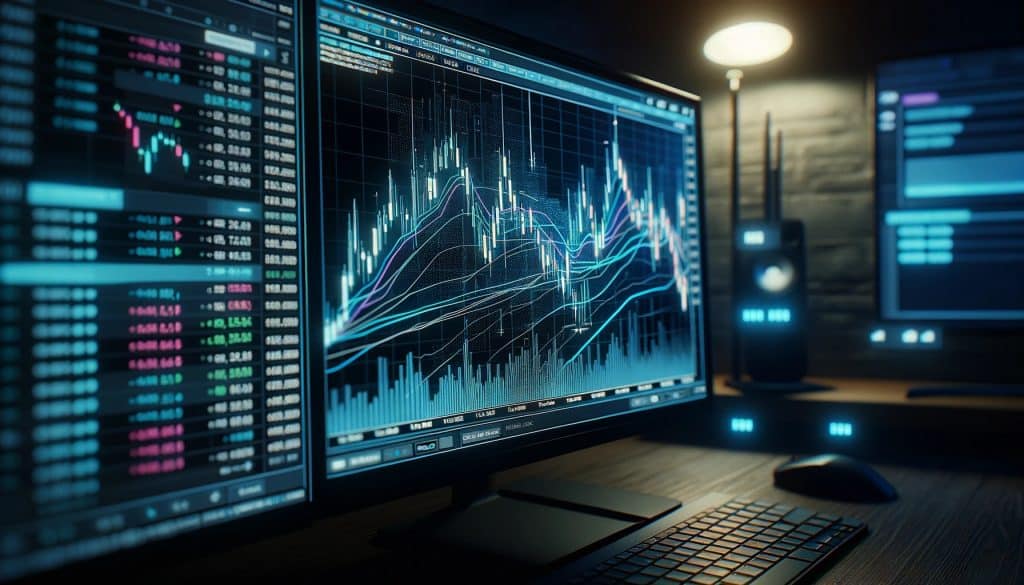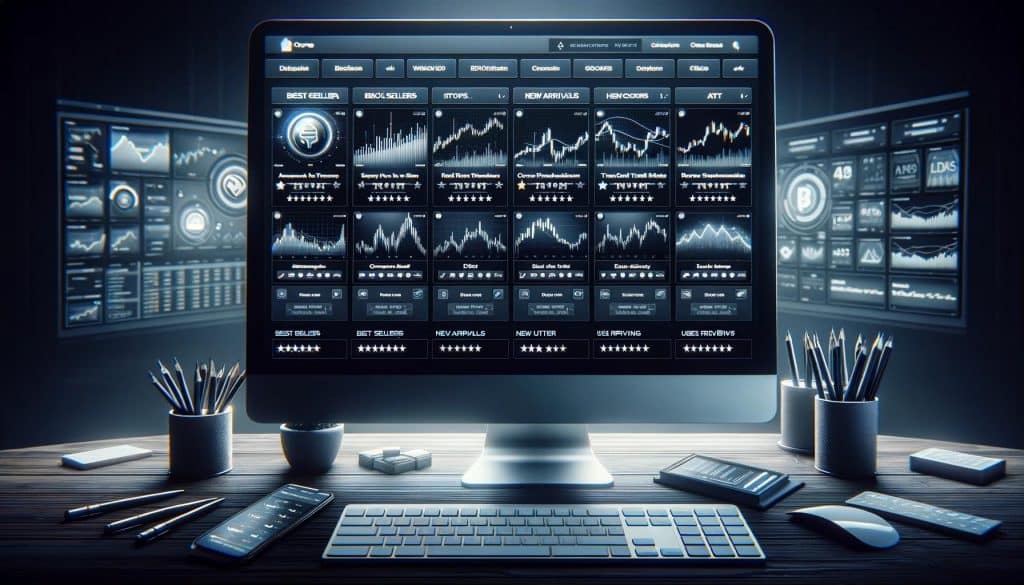Introduction to High Frequency Trading
In the digital age, financial markets have undergone significant transformations, with High Frequency Trading (HFT) standing at the forefront of this evolution. HFT utilizes advanced algorithms, high-speed data networks, and sophisticated technological tools to execute trades at speeds unimaginable to the human trader. By leveraging the ability to analyze and act on market data in fractions of a second, HFT firms can gain a competitive edge over traditional trading methods. This detailed exploration of HFT will dissect its strategies, impacts, and the regulatory landscape, providing insights into its role in modern financial markets.

Detailed Strategies Behind High Frequency Trading
Market Making in HFT
Market making, a core strategy of HFT, involves continuously buying and selling securities to provide liquidity to the market. HFT firms use sophisticated algorithms to place buy and sell orders simultaneously, capturing the spread between the buying price and the selling price. For example, an HFT firm might buy shares at $100.00 and sell them at $100.01, profiting from the 0.01 difference. This strategy not only benefits the HFT firms in terms of profits from the spreads but also enhances market liquidity, allowing other market participants to execute their trades more efficiently.
Exploiting Arbitrage Opportunities
HFT’s ability to exploit arbitrage opportunities arises from the speed at which these firms can act on price discrepancies across different markets or exchanges. A classic example is the arbitrage between stock index futures and the underlying stocks. If an HFT algorithm detects that the futures are underpriced compared to the stocks, it can buy the futures and sell the stocks simultaneously, locking in risk-free profits before the prices converge. This strategy, known as index arbitrage, requires rapid execution to be profitable, a hallmark of HFT.
The Role of Statistical Arbitrage
Statistical arbitrage is a more complex HFT strategy, based on mathematical models and historical price data to identify and exploit temporary price anomalies. Unlike traditional arbitrage, which seeks risk-free profits, statistical arbitrage involves calculated risks. An HFT firm might use historical data to identify pairs of stocks whose prices have historically moved together. If the price of one stock diverges significantly from its pair, the firm might buy the undervalued stock and sell the overvalued one, betting on a return to their historical price relationship. This strategy requires sophisticated algorithms to analyze vast amounts of data and execute trades quickly when conditions are right.

The Impact of High Frequency Trading on Markets
Enhancing Liquidity and Market Efficiency
One of the most touted benefits of HFT is its contribution to market liquidity and efficiency. By continuously placing buy and sell orders, HFT firms ensure that other market participants can execute their trades quickly and at stable prices. This liquidity reduces the cost of trading and helps prices more accurately reflect the underlying value of securities. Moreover, the efficiency of markets is enhanced as HFT helps in the rapid incorporation of new information into prices, ensuring that they are always reflective of the latest market conditions.
The Debate Over Volatility and Market Stability
Despite the benefits, HFT has its critics who argue that it can increase market volatility and lead to destabilizing events, such as flash crashes. A notable example is the Flash Crash of May 6, 2010, when the Dow Jones Industrial Average plummeted nearly 1,000 points in minutes before recovering. Critics argue that HFT can exacerbate price movements due to the speed and volume of trades, potentially leading to sudden and severe market swings. However, proponents contend that HFT can actually dampen volatility by providing liquidity and correcting mispricings more swiftly than traditional trading mechanisms.
Regulatory Challenges and Responses
The rapid rise of HFT has posed significant challenges for regulators, tasked with ensuring fair and orderly markets. Regulatory bodies worldwide have responded by implementing measures designed to curb the potential negative impacts of HFT without stifying its benefits. For instance, the U.S. Securities and Exchange Commission (SEC) has introduced rules like the Market Access Rule (Rule 15c3-5), which requires brokers to have risk management controls in place to prevent erroneous trades and excessive market manipulation. Moreover, the introduction of “circuit breakers” that temporarily halt trading in a stock experiencing extreme volatility is another measure aimed at preventing market disruptions.

The Future Landscape of High Frequency Trading
As technology continues to evolve, so too will the strategies and impacts of High Frequency Trading. The ongoing arms race in speed, algorithmic complexity, and data analytics suggests that HFT will remain a significant force in the financial markets. However, the future of HFT will also be shaped by regulatory developments aimed at ensuring that its growth does not compromise market integrity or investor confidence. Balancing the benefits of HFT with its potential risks will be crucial in harnessing its capabilities to foster more efficient, liquid, and robust financial markets.
Conclusion: Navigating the Complex World of High Frequency Trading
High Frequency Trading has indelibly changed the landscape of financial markets, offering both profound benefits and notable challenges. Through its advanced strategies, HFT has enhanced market liquidity, efficiency, and the integration of information into prices. However, concerns over increased volatility, market fairness, and the potential for systemic risks have prompted a careful reconsideration of its role in the financial ecosystem. As we look to the future, it is clear that the evolution of HFT will continue to be a focal point for market participants, regulators, and technologists alike, driving ongoing debates and developments in the quest to balance innovation with market stability.

FAQs on High Frequency Trading (HFT)
What is High Frequency Trading (HFT)?
High Frequency Trading is a type of financial trading that uses sophisticated algorithms and high-speed data networks to execute trades at extremely fast speeds. HFT strategies leverage the ability to process and analyze large volumes of market data in milliseconds or microseconds to make trading decisions, aiming to capture small price differences or arbitrage opportunities that exist for a very short time.
How does High Frequency Trading differ from traditional trading?
Unlike traditional trading, which might involve human decision-making and slower execution times, HFT relies on algorithms to automatically execute trades based on predefined criteria at speeds far beyond human capabilities. Traditional trading might focus on longer-term investment horizons, while HFT seeks to profit from very short-term market inefficiencies.
What are some common strategies used in High Frequency Trading?
Common HFT strategies include market making, where firms provide liquidity by buying and selling securities to profit from the bid-ask spread; arbitrage, exploiting price discrepancies of the same asset across different markets; and statistical arbitrage, using mathematical models to identify and exploit price differences among related assets based on historical price patterns.
How does High Frequency Trading affect market liquidity and volatility?
HFT is often credited with increasing market liquidity, as the high volume of trades provides more opportunities for buyers and sellers to execute their orders. However, its impact on market volatility is debated. Some argue that HFT can reduce volatility by quickly correcting mispriced assets, while others claim it can increase volatility during turbulent market conditions, potentially leading to events like flash crashes.
What regulatory measures are in place for High Frequency Trading?
Regulatory bodies have implemented several measures to address the risks associated with HFT. These include the Market Access Rule, which mandates risk management controls to prevent erroneous trades and market manipulation, and the introduction of circuit breakers, designed to halt trading temporarily in a stock if its price moves too rapidly in a short period. Regulators continuously monitor the impact of HFT and adjust rules as necessary to ensure market integrity and protect investors.
Can High Frequency Trading lead to market manipulation?
There are concerns that HFT could be used for market manipulation, as the speed and volume of trades could potentially be leveraged to influence market prices artificially. However, regulatory frameworks and surveillance systems are designed to detect and prevent manipulative practices, ensuring that HFT firms operate within the bounds of the law.
How are investors and traditional traders affected by High Frequency Trading?
The impact of HFT on traditional investors and traders is mixed. On one hand, the increased liquidity and efficiency can lead to tighter spreads and better execution of trades, benefiting all market participants. On the other hand, the speed advantage of HFT can put traditional traders at a competitive disadvantage, potentially impacting their ability to execute trades at the best possible prices.
What is the future of High Frequency Trading?
The future of HFT will likely be shaped by technological advancements, market evolution, and regulatory changes. As algorithms and computing power continue to improve, HFT strategies may become even more sophisticated. However, regulatory bodies worldwide will also adapt, implementing new measures to ensure that the benefits of HFT are balanced against the need to protect market integrity and prevent systemic risks.





